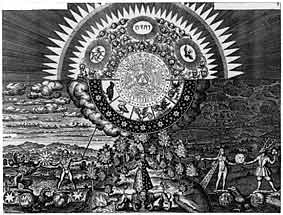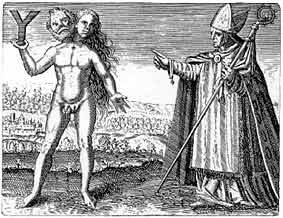"THE DANCE OF WRESTLING or THE ART OF LIFE" ©1981-83 (research text with references from various sources)
|
EXPERIENCE
The life of an individual is marked and shaped by historic and sociopolitica events in the particular territory inherited.
One of the differences between individuals is the implanted characteristics of inner intensity with which is encountered the experience of the surrounding psychological and physical environment.
In the initial first "steps" of life choice is limited by the provided and inevitably accepted possibilities that the particular environment is willing or can offer. With growth options are created, dreams, wishes and pursue for fulfillment. Allegorically life becomes a dance and a struggle. For the dance are needed skills while for the struggle strength and endurance. Paradoxically by doing so a conflict can appear with main opponent none other than the individual and the essence of being here.
This contradiction is the foreground and the stage of the dance.
At such complicated state the basic emotions of existence are challenged to master and be transformed. |
 HISTORY HISTORY
The
art of alchemy is almost as old as human civilization itself.
The alchemists of the Middle Ages learnt their art from the Arabs in
Spain and Southern Italy, who in turn had adopted it from the Greeks,
who again had developed alchemy on Egyptian soil in the fourth century
B.C.
Thus, alchemy extends its roots into the tombs and labyrinths of Egyptian
religion and the Hellenistic figure of Hermes Trismegistus, who is
the model for the medieval Mercurius, derived ultimately from the ancient
Egyptian Thoth, god of mathematics and science.
Historically it was the function of the Arab philosophers to recreate
the Hermetic doctrines of antiquity during the miraculous conquests
of Islam in the Seventh and Eighth Centuries A.D.
The Arabs developed new ways of rational experimentation while they
retained the Hermetic doctrines with the two-fold approach of making
gold and of revealing a way which could bring enlightenment to the soul.
Thus, in seeking counsel with the Arabian alchemical tradition, the
European alchemists resuscitated the Hellenistic syncretism of the ancient world which the Christian Church thought it had exterminated
for ever. |
 IDEA IDEA
Alchemy
is the art of transmuting base metals into silver or gold by freeing
the crude materials from their "impurities". The strange belief that
such a procedure might be undertaken derives from the natural philosophy
of the Hellenistic alchemists.
Basing their theory of nature on Aristotle they assumed that the basis
of the material world was of prime, chaotic matter which might only
come into actual existence if impressed by "form". Out of the swirling
chaos of the prima materia, "form" arose in the shape of the four elements:
fire, air, water and earth. By blending these "simple bodies" in certain
proportions God finally succeeded in creating out the limitless varieties
of life.
Transmutation is an obvious consequence of this theory. Any element
may be transformed into another through the quality which they have
in common, thus fire can become air through the medium of heat, just
as air can become water through the medium of fluidity. Also two elements
may become a third element by removing one quality from each: by parting
with the dry and cold qualities fire and water can become air likewise by parting
with the hot and fluid qualities the same elements can give rise to
earth.
From this belief it follows that any kind of substance can be transformed
into any other kind by subjecting its elemental proportions through
the processes of burning, calcination, solution, evaporation, distillation,
sublimation, and crystallization. If iron and gold are metals consisting
of fire, air, water and earth in differing proportions why then not attempt
to change the elemental proportions of iron by adjusting it to the
proportions of the elements in gold?
Here we have the germ of all alchemical theories of metallic transmutation
and it was based on this theoretical background that alchemists
sweated over their furnaces in their attempts to "improve" the valueless
metals. From the theoretical structure described above evolved the two postulates
which the deductive reasoning of alchemy was based upon. These were:
a) the unity of nature as expressed by the idea of the prima materia
from which all bodies were formed and into which they might again be
dissolved and b) the existence of a potent transmuting agent capable
of promoting the change of one kind of material into another. This imagined
agent became known as the "philosophers' stone", the most famous of
all alchemical ideas.
Naturally the alchemists enthusiastic "improvement" of the base metals
had a number of secondary consequences. Centuries of refined laboratory
techniques and alchemical manipulation of nearly any material (including
urine, feces and menstrual blood) didn't fail to produce a long list
of chemical discoveries: alcohol, nitric acid, hydrochloric acid, ammonia,
sugar of lead, and a number of antimony compounds.
But the production of silver and gold out of the metallic species remained
a blind alley which led the alchemists still deeper into a cave
from which there was no escape into the sunlight of scientific understanding.
Instead, the frustrated gold makers got entangled in a subterranean
labyrinth of fantasies, hallucinations, visions and dreams. Thus, what
appeared to be the greatest mistake of the alchemists actually tuned
out to condition their greatest achievement: in the darkness of their
blind alley the "Sons of Hermes" at last came to discover the unconscious. |
 IMAGINATION IMAGINATION
The
abundance of hallucinations, visions and dreams in Hermetic science helps
to explain the paramount importance ascribed by the alchemists to man's
powers of imagination. In alchemy the adept comes to terms with "true
imagination" by means of the act of meditation.
The meditative aspect of the alchemists understanding of their "work"
as a psychic process is a transformation in itself, therefore transforming
the alchemical laboratories into psychological laboratories as well. The
effect was the symbolized chemistry of alchemy, which, in the last analysis,
represents an alchemy of the mind.
In addition to projection, imaginative experiences and dreams, we shall
probably have to add hallucinogenic drugs as instrumental in producing
the visionary experiences of the alchemists.
Since the "Sons of Hermes" were the leading chemists of the Middle Ages,
and since they experimented with all kinds of plants and herbs, it is
inconceivable that they should not have known or used themselves a number
of hallucinogenic drugs. This would explain the vividness and authenticity
of the unconscious processes described by the "opus alchymicum", processes
which today are reproduced with staggering correspondence by modern drugs
such as LSD, psilocybin and mescaline.
As gradually the alchemical laboratories changed into psychological laboratories
and the alchemical work into explorations of the "inner universe", the
purgation and transformation of metals were "translated" into symbolic
procedures concerned with the purgation and transformation of souls.
Thus the meeting between the alchemists and the unconscious had a revolutionary
impact on the alchemical work, which at the end of the Middle Ages began
to develop into a mystical system.
Finally, in the Thirteenth, Fourteenth, Fifteenth and Sixteenth Centuries
the psychological experiences of generations of alchemists were brought
upon a common denominator and "distilled" into a mystical system remarkable
for its theological boldness and unity of doctrine: the opus alchymicum. It was not until the Twentieth Century and the modern trends of irrational
thought that the alchemists came into focus again after their long sleep.
Depth psychology paved the way by discovering the unconscious foundations
of the "opus alchymicum" (Silberer and Jung), and when the psychedelic
revolution got under way, in the 1960s, the alchemists became the heroes
of the day. Hallucinogenic drugs evoked a wealth of imaginative experiences
which were interpreted as an alchemy of the mind very much resembling
the kind of "alchemy" engaged in by the medieval gold-makers, who probably
used the same means. Jung christened this hypothetical process "individuation",
a term implying psychological totality, individual wholeness, or (theologically)
the soul's attainment of divine selfhood. |
 LANGUAGE LANGUAGE
Alchemical
symbolism is closely bound up with astrological symbolism. If we want
to unravel the deeper meaning of the fact that the king is on the sun
and the queen on the moon, we must look into the astrological implications
of these heavenly bodies. The sun is the greatest of all the planets
and it stands for the male principle, consciousness, or spirit. A luminous
eye, soaring wings, royal dominion, fire and gold are archetypal elements
of solar symbolism. Its core is a heroic force which is creative, guiding
and indispensable to life. The sun governs in only one sign: the Lion.
Because of its passive character (in that it receives its light from the
sun) the moon is equated with the feminine principle and with the soul.
Governing in the Crab, the moon is a symbol for the mother and is closely
connected with the maternal functions of conception and birth. Whereas
the sun with its fiery activity is responsible for the life of the manifest
world, or the day, the moist moon governs the life of the unmanifested
world, or the night. Volatile and silvery, the moon of astrology belongs
to the nocturnal, subterranean and subconscious part of man's world. She
embodies the psychic, the occult, and the magic, and her "manna" attracts
the sun with irresistible force.
The astrological features of the alchemical Sol and Luna, or king and
queen, and the spirit and anima symbolism expressed by these Hermetic
figures, were unraveled by Jung in the1920s. According to Jung, the enigmatic
anima figure of the alchemists personifies the unconscious psyche and
its sexual dynamics in the man.
Whereas the unconscious tends to personify itself in a female form in
the man it will assume a masculine form in the woman. Jung named these
complex soul images "anima and animus". Formed out of manly experience
of woman from time immemorial and resembling the suppressed "feminine"
elements of the conscious masculine psyche, the anima complex represents
the "eternal feminine" principle in man, his magic idea of the ideal woman.
The archetypal nature of the male, anima, or "soul", links it to the collective
unconscious and the self, the polarity of which the anima reflects in
a hallucinating way. Young and old, passionate and aloof, devilish and
divine, the anima exhibits not only the erotic features of a whore, mermaid,
and vampire, but simultaneously the luminous and spiritual features of
virgin, angel and goddess. Elusive and enigmatic, surrounded with
all the strange aura of the unconscious, the anima may be studied in dreams
and in her projected form in poetry and art.
Both alchemy and astrology are cyclic systems built upon the principle
of analogy, the cosmic order is analogous to the human order. Because
the universe is an immense organic being, all parts of the world are
subject to the same laws. What happens to the alchemist at the beginning
of his work is therefore a reflection of what happens at the beginning
of the yearly nature cycle. According to this system of "'correspondence",
the work should begun when the sun is in Aries, the"'priority" sign of
the Zodiac, hence, of the "opus circulatorium". |
back to top |